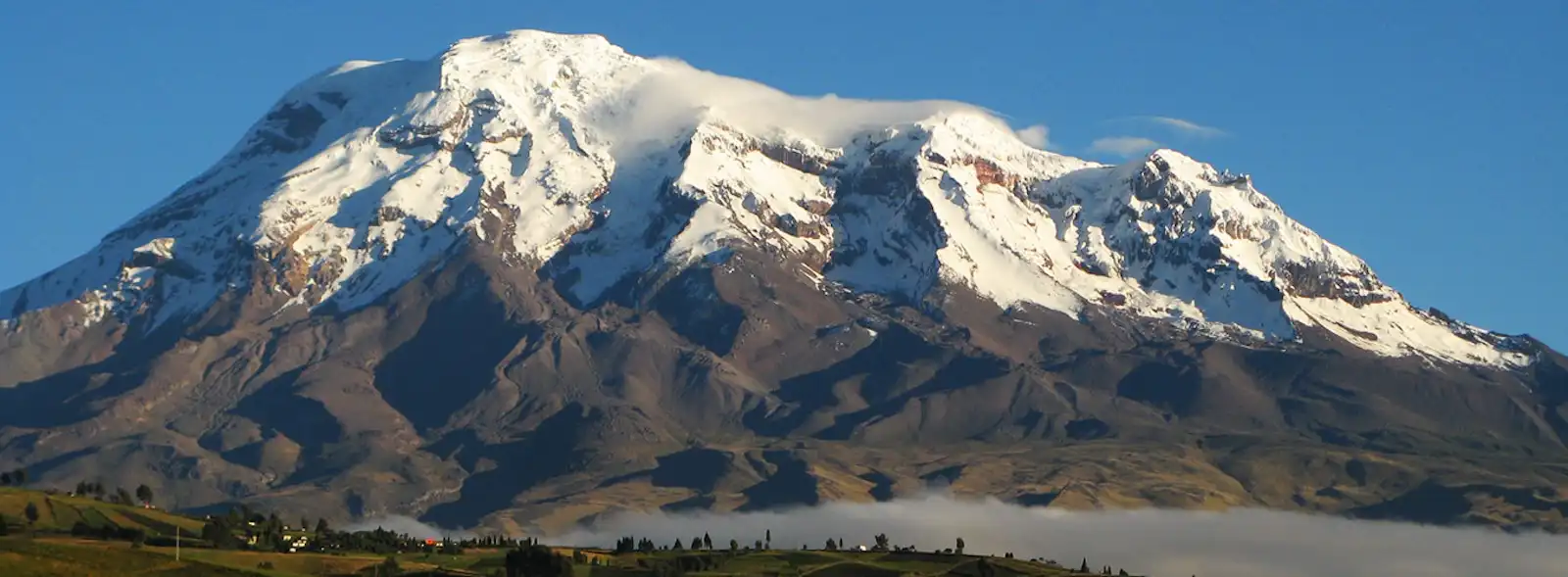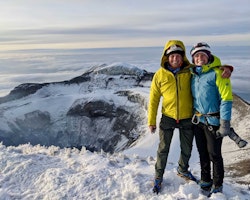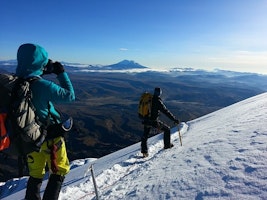Ecuador is a world-renowned destination among climbing and mountaineering fans due to its volcanoes. Above all, the majestic Chimborazo stands out because of its altitude and the technical complexity of its ascent. Arrange your trip to this volcano in the best possible way with these tips for a successful climb.
A few facts about Chimborazo
Located at the Western Andes Range, Chimborazo is the highest volcano in Ecuador, with a maximum height of 20,561 feet and a prominence of 13,526 feet from its base.
Despite not being the highest mountain in the world, its summit is the furthest point from the center of the Earth; the elliptical shape of our planet and Chimborazo’s proximity to the Equator are the reason its summit is 1.25 miles further than Everest’s.
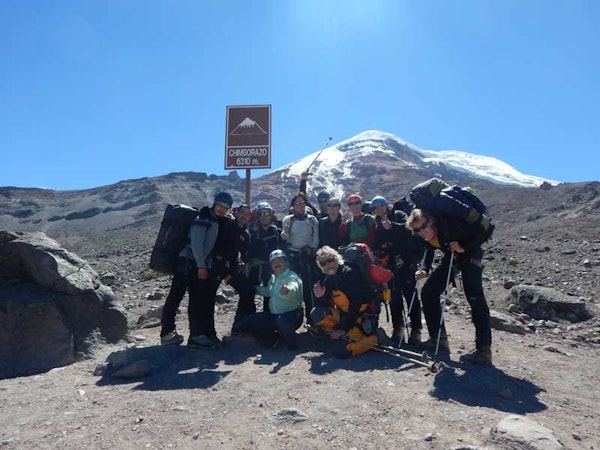 Base of Chimborazo
Base of Chimborazo
What is the best time to climb Chimborazo?
Chimborazo can be climbed all-year round, although the best period runs from November to February and from May to July.
It's not advisable to climb between March and April because there's a huge amount of rain and snow. August can be very windy, but you can get good weather conditions during September and October.
The best option is to start the ascent before midnight, in order to be back no later than 10 a.m., as sunlight adds the risk of rock fall and the cloudy afternoon weather reduces the visibility of the trail.
Why is it difficult to ascend Chimborazo?
The well-known health risks of high-altitude ascents are, for starters, a setback. In order to avoid them, try to acclimatize in the lower peaks of Ecuador first before heading to Chimborazo. Climbing the volcano with the help of a mountain guide, who is prepared to cope with such situations, is the best option.
To avoid the risk of getting altitude sickness, it is crucial to have a good acclimatization.
Some guides propose longer programs, in which you climb several peaks before going to Chimborazo, gaining altitude progressively. Check out this 10-day program climbing Cayambe & Chimborazo, or this 11-day expedition that takes you to 5 Ecuadorian summits.
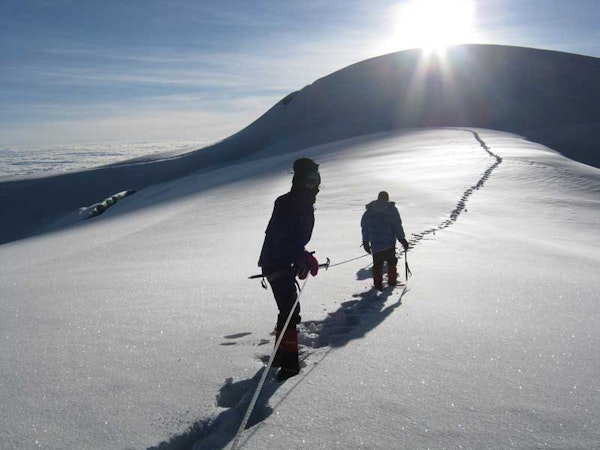 Whymper summit, Chimborazo
Whymper summit, Chimborazo
If you have a solid mountaineering experience, another option is to do some acclimatization on your own and then hire the guide for a straightforward 2-day ascent to Chimborazo.
Why hire a mountain guide?
The path to Chimborazo’s summit has plenty of glaciers, some of them with dangerous crevasses. Besides, the tough weather in Ecuador and the avalanches make the ascent even more difficult.
You should always make sure to hire a professional and certified mountain guide. The best options are going with an IFMGA/UIAGM guide (international certification) or with an ASEGUIM guide (Ecuador's national certification, recognized by the IFMGA).
As a consequence of its technical difficulty, historically, there have been fatal accidents in the volcano, most of them due to avoidable mistakes. Because of that, since November 2012 the Ecuadorian government has disallowed climbing Chimborazo without a certified mountain guide.
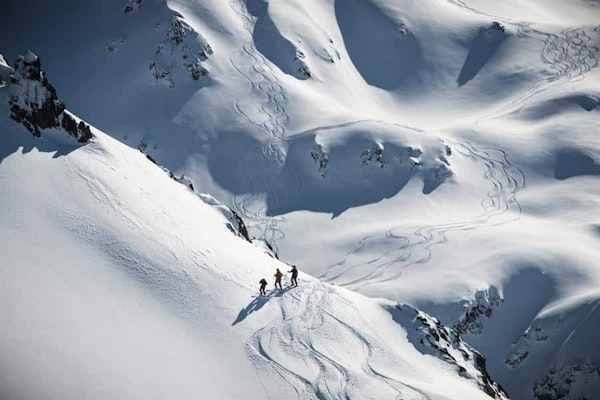 Chimborazo's shadow
Chimborazo's shadow
How to get tho Chimborazo
The ideal starting point for a trip to Chimborazo is Riobamba, an Andean city located on the Avenue of Volcanoes, 120 miles (200 km) away from the Ecuadorian capital, Quito.
You can take a bus there from the Quitumbe bus station, a bit south of Quito. Once there, you can easily get to the Chimborazo Reserve. Take one of the buses heading to Guaranda, and ask the driver to leave you at the Reserve’s entrance. There’s also the option to take a cab from Riobamba for 35 bucks.
Either way, you can make the proper arrangements for the pick-up with the guides. Many of them will include transportation to Chimborazo in their programs.
Where to stay before and during the ascent?
Local guide Edgar Parra recommended several accommodation options for the night before your Chimborazo ascent:
Estrella del Chimborazo Lodge (this is the only place inside the Chimborazo Reserve)
Hotel Hacienda Abraspungo (Riobamba)
Hostería La Andaluza (Riobamba)
Zeus Hotel (Riobamba)
Mansión Santa Isabella (Riobamba)
The most popular mountain hut to stay during your ascent to Chimborazo is Whymper. Located at 16,400 feet (5,000 m) it is well-equipped with comfortable bunk-beds, bathrooms, basic food supplies and a fireplace.
Refuge Carrell, at 15,750 feet (4,800 m), is also well-prepared to host climbers. Because of its location, to start the ascent from there, you will need to leave a bit earlier.
There are two campsites closer to Chimborazo: El Castillo and Moraine. The former can get pummeled by snow fall in the case of strong wind or avalanche.
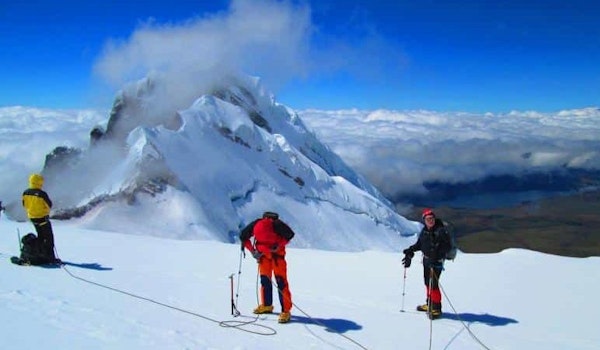 top-5-volcanoes-to-climb-in-ecuador-chimborazo-ascent
top-5-volcanoes-to-climb-in-ecuador-chimborazo-ascent
Are you ready for a mountain adventure in this iconic Ecuadorian volcano? At Explore-Share we have the best selection of certified mountain guides to climb Chimborazo, check them out and start planning your trip!
